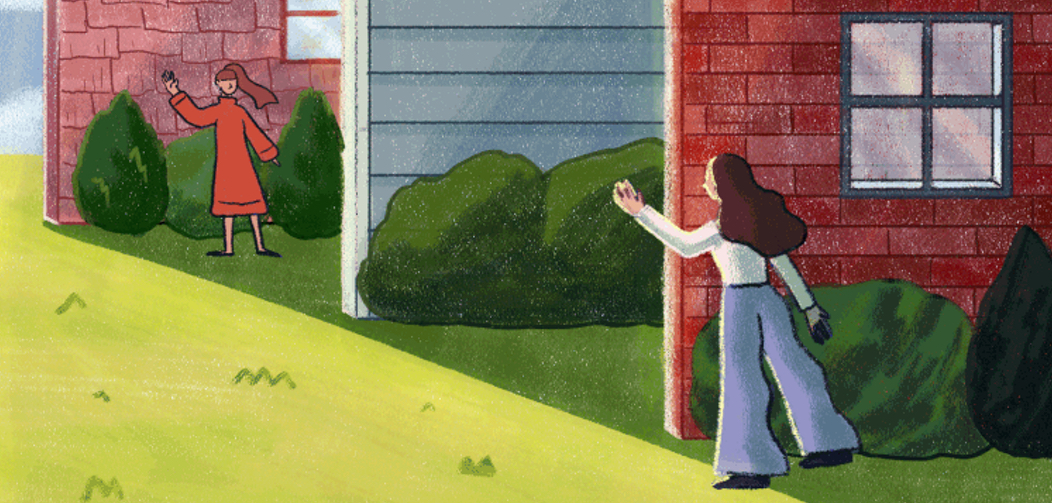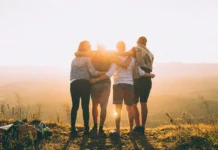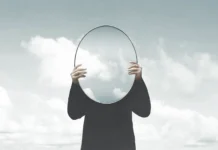As a psychiatrist, I recognize how valuable everyday interactions are for mental health. We are deeply social creatures who need others as much as we need air to breathe. Studies show that frequent positive interactions with others is at the heart of our wellbeing. People who experience “felt love”—brief moments of connection in everyday life—are happier and healthier compared to those with lower felt love scores.
Of course, these moments are best experienced in person. Chocolate tastes better when shared. A hill feels less steep when walking beside another. Pain is less painful when holding a loved one’s hand. Making chitchat with someone you don’t know can brighten your day. This is why I talk to patients about making the most of face-to-face interactions with loved ones and strangers. Presence, I tell them, is everything.
But not now.
Today, I implore you to take your distance. If you’re under 50 and in good health, COVID-19 is unlikely to kill you. But that doesn’t mean you shouldn’t take precautions to protect those who are most vulnerable. Minimizing your physical contact with the outside world might save someone else’s life.
Please don’t get on a plane unless you have to.
Please don’t visit your parents.
Please skip playdates and dinner parties.
Work from home if you can.
Social distancing might be inconvenient but someone else’s life may depend on it.
If you think I’m being too dramatic, listen to Yale professor Nicholas Christakis who studies how humans spread everything from ideas, to behavior, to germs:
“If we limit social contact, we can “flatten” the coronavirus epidemic by spreading out the same number of cases across a longer time horizon. That way, we will have fewer sick people at any given point, allowing health-care systems and supply chains to provide precious resources such as ventilators, beds for intensive-care units and, of course, medical staff.”
So hunker down. Stay put. Do your part to curb the spread of this virus in the community.
It’s strange endorsing social distancing when so much of our wellbeing depends on social connection. Seeing inventive ways people are staying connected while physically distanced gives me hope. A video of quarantined neighbors in Siena singing a popular Italian song from their balconies and waving at one another reminds us that we are not alone.
Reach out to friends, especially those you know are home alone. Pick up the phone and call your aunt. Send a text to your old roommate who lives in Tennessee. A group chat with NYC friends is helping me feel connected. A friend holed up in Connecticut sends me daily gallows humor memes.
Here is what I recommend:
1. Maintain an other-orientation. Self-interest will only make you feel worse and stress you out.
2. Be a beacon. Instead of forwarding or retweeting anxiety-inducing headlines, share goodness and actionable insights to lift people’s spirits. Cellist Yo-Yo Ma started a “songs of comfort” series, Lizzo is leading meditations, Josh Gad is reading bedtime stories, Tom Hanks and Rita Wilson created a “Quarantunes” playlist.
3. Consider the people quarantined with you. Set ground rules with family members/roommates/partners. Don’t walk around with your phone in your hand constantly sharing breaking news. Your constant updates will amplify the anxiety in the house, especially if there are kids around.
4. Encourage other-oriented discussions during meals. Sample topics:
- If you could be any historical figure, who would it be and why?
- Describe a quality you admire in your best friend.
- What lesson have you learned that you would like to share with people younger than you?
5. Recreate water cooler moments. Jamil Zaki, professor of psychology at Stanford observes:
“When we share physical space, we don’t confine our conversations to urgent matters. We dawdle, kibbitz and goof off. Those in-between moments are urgent — to our sense of place and community. We must keep them around in whatever format we can.”
6. Call friends and family members. Make a pact to talk about something other than COVID-19.
7. Donate to a charitable organization like Citymeals-on-wheels that delivers meals to elderly New Yorkers. Citymeals has already delivered 45K meals emergency meals and will deliver 100K more in the next few days.
8. Schedule a FaceTime lunch with a friend, set up a virtual book club, watch the History Channel’s Washington documentary “together,” or plan a Skype happy hour.
9. Get creative with gratitude—send a message to someone you are grateful to but never properly thanked– teacher, a doctor, a mentor, a colleague. I was inspired by these people in Madrid thanking healthcare workers.
10. If you can, continue to pay hourly workers like your dog walker or housekeeper even if they aren’t working.
11. Reach out to an old friend you haven’t spoken to in a while.
12. If you have to go to the store, send a message to an elderly neighbor asking if they need anything and leave it at their door.
Becky Wass, a lecturer in Cornwall created a #viralkindness campaign, putting postcards on doorsteps with the message:

There are many ways to stay close while keeping your distance. My friend Jessica Seinfeld sent me this from a rabbi:
“For every hand that we don’t shake must become a phone call that we place. Every embrace that we avoid must become a verbal expression of warmth and concern. Every inch and every foot that we physically place between ourselves and another, must become a thought as to how we might be of help to that other.”
Coronavirus isn’t about any one of us. It’s about all of us.
I wish you all the best,
Dr. Samantha Boardman






